
..........................................................................................................................................................................................................
vento - the movie

islay being historically and presently a farming community, the island is peppered with old drove roads, devised to allow famers to move their herds and flocks easily across country as well as taking them to market. while many of these routes are now overgrown as their need has receded to the point of extinction over the past decades, it's still possible to find beginnings, ends and middles if you look closely enough, and there are still several farmers and retired farmers able to describe in detail what use was made of these makeshift but well trammeled roads.

and as the house at gartbreck, about two miles out of bowmore is granted planning permission to become islay's ninth malt whisky distillery, someone in the office piped up during the week with the recollection that there used to be a small ferry boat that sailed between gartbreck and port charlotte on the other side of the loch. motorised transport and an almost reasonable road surface have effectively made such a sea route redundant, though i cannot deny it would be a delightful route to reach bruichladdich for a coffee in the summer months. i'm simply not a good enough sailor to attempt anything of the sort at this time of year.
though one or two of these ancient passages could conceivably make for interesting and diversionary walking and cycling routes even today, it's highly doubtful that resurrecting any of them would bring a greater number of tourists to the isle. the distilleries we currently have, coupled with road equivalent tariff on the ferries mean that islay's tourism is all but currently saturated. this rock in the atlantic is not over-endowed with road miles in the first place, so any distance savings would be minimal at best, and you can see most of which you wish via the current transport infrastructure.
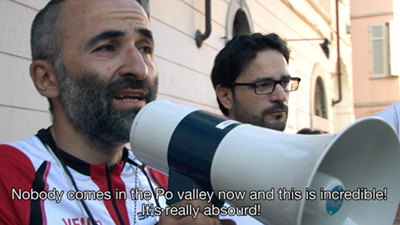
there are, however, countries further afield with historical routes that still exist, even though modernity and the encroachment of the motor car have relegated them almost to obscurity.
the river po stretches from the western coast of italy all the way from torino, across country to venice in the adriatic on italy's east coast. this wide and once busy waterway was often substituted for the sea by various communities that sit along its banks. they undertook the same pastimes on its beach as those on the adriatic coast. five designers from the polytechnic in milan, a city that lies within easy access of the river about a third of the way from torino en route to venice, decided to pedal the 670+ kilometres intending to demonstrate the feasibility of creating the longest bike path in italy.

aside from undertaking the distance over a period of eight days, they came across many obstacles to easy pedalling principally the result of regional engineers not having taken the bicycle into consideration at all. barriers that meant having to dip under with fully loaded tourers and bridges up and across which bikes and luggage had to be manhandled did little to ease their journey. however, their route took them through towns and villages displaying some exquisite examples of italian architecture and tourist attractions, many of which lie all but unknown and through countryside that has changed dramatically over the last half-century.

the man in charge of the expedition and a single-minded individual who is passionate about opening up the route is paolo pileri. a strong rider towing a bob trailer behind his mountain bike, his is the voice most often heard at public meetings staged along the way to point out to members of the communities just how lucrative the opening of this route could be to their towns. and in the opening sequence of the film vento, he points out that this could all be achieved for the same cost as two kilometres of motorway.
this documentary, lasting 50 minutes was filmed by paolo casalis, pino pace and stefano scarafia, following the five designers as they wend their way along the banks of the po eventually destined for the historical city of venice. not only have they made a quite superb film, but the equivalent of an italian tourist board invite to see some of italy's hidden treasures along the way. the po has to be traversed by boat on three occasions along the way, leading to some intriguing alternative views other than the aspects offered by pedalling. the producers have strategically inserted some fabulous historical footage of how important the river once was to those who lived along its banks.

those who may wish to view the impassioned perspicacity of paolo pileri and his colleagues can now access the film either by download, online streaming, or purchase as a dvd. though naturally the narrative is in italian, there is also a version with english subtitles. for those who are perhaps more adventurous and would consider undertaking at least part of the same route for themselves, the footage is invaluable, and even at its very least it's a highly entertaining and educational 50 minutes.

you can watch the trailer here and if you like what you see, this is also the place to order a copy in the format of your choice. most of us view italy as something of a pilgrimage to which it is necessary to acquiesce at least once in a lifetime. those ideals, however, mostly inhabit the sporting life; this proves that there are aspects of italian cycling life that more readily parallel our own attempts to have those in power pay more attention to the benefits of commuting and cycle-tourism.
as two german tourists admit to pileri en-route, they have met around five cyclists per day on their travels along the banks of the po, whereas they would more regularly meet hundreds if not thousands on a comparable cycle route in germany.
this is a unique film that deserves all the attention you can give it.
monday 10 february 2014
 ..........................................................................................................................................................................................................
..........................................................................................................................................................................................................taurus corinto roadster

it seemed an innocent enough desire. to ride from one end of islay across the middle in order to at least partially recreate a daily commute undertaken by mrs washingmachinepost's grandfather in the 1930s. it's a trip i've rather fancied emulating for a number of years, but until now, an unfulfilled notion. but this historical recreation, such as it is/was gained a new lease of life thanks to the director at glasgow's pronto gara cycle shop, malcolm glass.
after an afternoon visit at the tail end of last year, malcolm e-mailed to say he'd be happy to lend a taurus corinto roadster, replete with brooks saddle, mudguards and a mechanically superb set of rod-operated stirrup brakes. the very means of stopping most likely employed by the late mr carmichael.
the taurus corinto is almost the direct antithesis to the bicycles regularly occupying thewashingmachinepost bikeshed. in fact, it's probably not the type of bicycle considered by the majority of post readers. is that a mistake? should we, for the purposes of commuting, be widening our horizons just a tad to take what at first look might seem a very pedestrian form of transport?
modern thinking has it that, unless this particular genre of cycling takes on a new and important lease of life in the next few years, cycling will most likely become static. yes, the wiggo bubble has brought new adherents of the sportive and gran fondo, but that particular market will rise and fall as it almost always has done. bringing the commuter into our world via the sit up and beg style of bicycle, is where the next growth spurt is likely to spring from.
so what does one of the finest examples of the species behave outside of its comfort zone?
sunday 9 february 2014
 ..........................................................................................................................................................................................................
..........................................................................................................................................................................................................words, words, words

gary fisher is one of the stalwarts of the bicycle industry, allegedly once gaining a modicum of notoriety in 1968 for having been banned from racing for wearing his hair too long. though i've never raced, i can identify with the problem. generally acknowledged as one of the fathers of the mountain bike, more recently he has lost the mastery of his own velocipedinal destiny as head of his own bicycle company, for the gary fisher bicycle collection produced under the auspices of the trek bicycle conglomerate, simpy says trek on the down tubes.
he's one of the great eccentrics of the bicycle industry, in fact, even removing gary fisher from the context of the bicycle, would still leave him as a lovable eccentric with his waxed moustache and goatee beard. though i have never personally met the man, i did come across him at the north american handmade bicycle show a couple of years back where he appeared as a somewhat larger than life character. nowadays he seems more comfortable as a cycling ambassador via his twitter account and frequent appearances at cycle-related events throughout the world.

and he's the principal subject of the cycle systems academy podcast, a new series of audio narratives hosted and produced by velocast productions comfortably ensconced in peebles, near the scottish border. compered by cycle systems academy's sean lally and more usually velocast's john galloway and produced by velocast's scott o'raw, there are currently two editions available, number one in the series featuring team sky's training camp in majorca. these podcasts are intended to form a weekly series, one that they hope will become a 'must listen' part of the cycling week. their ease of use, in that you can listen while fettling the bicycle or flicking through the pages of the latest bicycle website, deciding which model you're going to decide you can't afford this year, plays well to their forte.
compare that with settling down to read thewashingmachinepost in a quiet corner of the mansion every day.
with so many podcasts of all genres available via apple's itunes store free of charge, you'd wonder that anyone would be able to make a living from charging cash money for such words of wisdom, but rather admirably, that's exactly what john and scott at velocast have managed to do. originally producing podcasts featuring the classics and the three grand tours, they decided to continue with their free podcasts on more general cycling subjects and charge for premium content. surprisingly to both, enough folks were happy to pay for what john describes as "like listening in on a conversation between two fans in a pub".

joining john on these podcasts is cillian kelly, a man of tender years who still continues with his day job of software developer. "He's a young lad of 28 but I have never talked to anyone who can duplicate his passionate and in-depth knowledge of the sport." this has made for a very successful partnership between the two, with scott producing the final product.
"To be honest Scott had to pester me to start podcasting in 2009. I just could not see how anyone would be interested in two Scotsmen bumping their gums about bikes." the idea surfaced after the two gents visited eurobike in freidrichshafen. after our two heroes had spent a day trawling the stands and conversing endlessly about the bike technology on display, scott asked john "Doesn't it annoy you that you're not using that knowledge now? We should do a podcast."
having made a few less than successful attempts to enter the podcast fray myself several years ago (admittedly in a solo capacity) i can attest to the effort and skill that necessarily goes into making use of what still seems like appropriately contemporary technology. with the almost legendary modern attention deficit, an interest in podcasts matches a reputed similar increase in the download of audible books. so much less effort involved in having someone read to you. and in the light of pre-live coverage shows that accompany the racing on eurosport (and cycling tv at one time), paralleling that seen on other tv sports as diverse as the superbowl and formula one motor racing, it seems discussion before and after a race has infiltrated the cycle sport psyche.
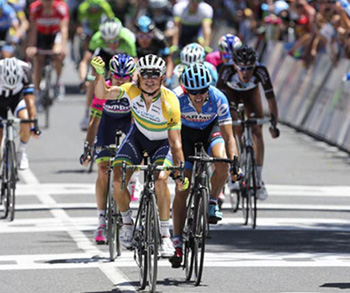
entitled this week in cycling history, or twich for short there are a number of purchase options available to the intrigued. if you'd like to try before you commit, a single episode can be had for £0.69. however, if you'd like to sample the quality as well as the width, £2.75 will provide a month's worth of audio discussion on your ipod. once you're convinced and find it darned near impossible to miss a single word of wisdom, the most economic form of subscription is 52 weeks' worth for a mere £30. when you consider that the weekly cycling press costs around £2.99 for each issue, it seems something of a bargain. and you don't even have to read it.
the audio podcast is a medium that parallels the joy of radio, one that can be enjoyed in manageable chunks and in pretty much any location you care to name. prognostications of a few years ago dictated that audio would be superseded by video, but in point of fact, the spoken word has fiercely defended its ground. new doesn't necessarily mean better, depending on the context.
the free content from both velocast and cycle systems academy can be accessed via the web link below, but with the european spring classics simmering on the horizon, maybe now is the time to familiarise yourselves with messrs galloway, o'raw and kelly and spend those thirty coins. just think how well-informed you'll sound each monday morning in the office.

saturday 8 february 2014
 ..........................................................................................................................................................................................................
..........................................................................................................................................................................................................at the risk of repeating myself

i doubt anyone, other than bona-fide programme planners, will recall when the situation first occurred, and i'm not altogether sure why, though i can't say it hasn't been of use on more than just a single occasion. once was the time that we had only three television channels and woebetide the individual who arrived home late for his/her favourite programme or, worse still, forgot about it altogether. though perhaps just too much information for an audience of such tender age, i can remember when the test-card was displayed up until television commenced around lunchtime, and it was possible to listen to an announced 'good night' before witnessing the screen display compact to a small white dot in the centre and disappear altogether.
and that, basically, was that. no staying up till the wee small hours to watch a film that had been shown only two days previously, a film that had been repeated on several showings before that. nor was it possible to press the menu button on the remote (come to think of it, in the days of three channels, there was no such thing as a tv remote) and see an apparently endless listing of programmes including those prefixed with +1. for that is to which i made reference in my opening sentence; a sudden bursting forth of channels running one hour behind what we must now refer to as regular programming.
no matter that much of today's broadcast output is also available online, with one or two services allowing almost arbitrary start times to suit the circumstances of the evening. bizarrely enough, regionalisation of the itv channels has thrown up its own inconsistencies. attempting to watch an itv programme via itv player recently, i was asked to input my postal code, before being told that i did not live in the broadcast region, but that the programme may be available on the stv player. sadly it wasn't and i was thus unable to view the programme.
many of us have come across geo-restricted internet broadcasts when trying valiantly to find an appropriate feed to watch the spring classics or even the odd cyclocross race. to an extent, that seems less iniquitous, for i doubt that the channel's intended demographic would be overly impressed by a scotsman having free access to their national broadcasting company. the bbc operate a similar deterrent via their iplayer service. but quite why independent television should wish to prevent me watching national tv, i'm really not too sure. perhaps big brother really does exist. had i been a tad quicker off the mark, i'd have used the postcode of a friend in london.

so, aside from the plethora of digital channels filling their waking hours with re-runs of things watched only a day or so previously (or even on the selfsame evening), a bit of channel jumping and web surfing means it may just be possible to watch the same programme over and over again ad finitum.
which is a similar sensation that i may be about to impose from the safety of sitting behind my black and yellow pixels. not too long ago, i was happy to bring to your attention two pocket cycle maintenance books from bloomsbury publishing, both written by rouleur editor, guy andrews. in this, guy is flying solo on the pocket road bike maintenance volume and assisted by mike davis when discussing bicycles with knobbly tyres. considering the inclement weather experienced up and down the entire country over the last month or two, weather that shows little sign of improvement if long-term forecasts are to be believed, a smidgeon of maintenance on hard-pressed bicycles of whatever flavour would probably not go amiss.
made mention of in my original broadcast, but no less important and impressive in this repeat, is both their pocket size and the ability to lie them flat on the ground or the workbench while fettling is in progress. both retail at a very pocket friendly £9.99, but i've no real intention of following in the footsteps of our national broadcasters and offer a total repeat. instead, i'm offering two of you the chance to create your own repeat during your very own fettling. for thanks to the generosity of bloomsbury publishing, i have a copy of pocket road bike maintenance and pocket road bike maintenance to give away to the senders of the correct answer to this question:
with whom did guy andrews collaborate in the writing of 'pocket mountain bike maintenance'?
e-mail your answers to brian@twmp.net, specifying which book you would prefer to receive if successful and including a full postal address. the correct answers will be chosen at random after the closing date of friday 14 february.
friday 7 february 2014
 ..........................................................................................................................................................................................................
..........................................................................................................................................................................................................reconsidering the bicycle. an anthropological perspective on a new (old) thing. luis a vivanco. routledge publishing paperback. 153pp illus. £15.99 (kindle edition £14.39)

like many others, i have had cause to visit a number of the national cycle shows, such as that in earls court before it moved to birmingham, nahbs in sacramento and the scottish bike show, though i've yet to see it in its natural habitat at sir chris hoy's velodrome. aside from spending far too many hours socialising with the folks manning the stands, one of the principal reasons for any of these visits is hopefully to drool over at least one or two examples of the acres and acres of carbon fibre. granted, more and more of these look more and more like each other, but that's a whole 'nuther bucket of ceramic bearings. in common with most of us who are happy to answer to the epithet 'cyclist', our interest in the bicycle occasionally borders on the obsessive. flattened top tubes, wiggly forks, fluted tubing and one-piece handlebars all constitute that object of desire.
however, carbon fibre features very rarely in the day to day, for aside from one or two residents of the pyrenees or the mountains of northern italy, a perceived need for a featherweight means of velocipedinal transport is particularly rare. transportational matters arguably occupy the more mundane levels of society, whether allied to the bicycle or not. security from bicycle thieves is something i can rarely recall being brought to anyone's attention during last year's tour de france, or whether that last packet of cornflakes was simply an item too much for a safe trip home. as i mentioned above, a more mundane level.
i would find it very unusual indeed if any of us were attending any cycle shows to take an anthropological view of the wares on display. strictly speaking, static displays of bicycles are rather unsuited to such considerations; it's the use of the bicycle in day to day human activity along with our interactions on its behalf, that can find themselves under scrutiny for such purposes. that, rather basically put, is the concern of luis vivanco in this comprehensive anthropological study of the bicycle in both modern society and the historical manoeuvres that placed it in its current slot in contemporary society.
intended as course material for those studying cultural anthropology, the chapters are frequently brought to a close with suggestions as to further reading that may be undertaken, along with one or two practical exercises in favour of future study. the author is particularly well qualified in his field, retaining an associate professorship of anthropology and the director of the global and regional studies program at the university of vermont. his interest in the bicycle is both academic and pragmatic, given that he is an active cyclist, though one who has been brought up on the bicycle and flirted with activism, rather than one who has kindled an obsessive sporting interest from afar.
that, in a nutshell, makes for an eminently readable book, one that was far more approachable than its provenance would suggest.
vivanco revisits the history of the bicycle, though managing to miss out any reference to scotland's kirkpatrick macmillan. not unnaturally, as an american teaching at an american university, while the historical aspect cannot reasonably omit necessary european facts, there is a perhaps unsurprising but noticeable american bias in his narrative. the chapter on its historical lineage is headed 'What (and when) is a bicycle?, a particularly well illustrated discourse on the rise and fall of the bicycle across the pond.
"Henry Ford, who began his career as a bicycle mechanic, reportedly visited Pope's (col. albert pope first arranged for high-wheelers to be manufactured in the usa in 1877) factory and gained a lot of ideas about mass production that he would later implement in his own automobile factory."
of course, academia cannot but help interject itself in the narrative at various points; the book could not be adjudged suitable for its intended purpose were this not the case. this leads to some largely impenetrable concepts for those of us more conversant with bike shop banter than with academic terminology. subheadings such as 'A bicycle is a Multidimensional object' can but lead to phrases such as "...bicycle riders today tend to...encounter the bicycle as a material object with multiple experiential, individual, social and political-economic dimensions." it is manifestly unjust of me to pull quotes such as this out of context, for though there may be considerable words of more than three syllables used throughout, placed in context it all makes perfect sense.
though vivanco makes every effort to remain objective throughout, he doesn't completely succeed. the only conceivable way this could have been the case would have been through a detached interest, but his interest has already been declared at the book's beginning. evidence as to the bicycle's efficacy in transportational and health matters is predominantly positive, with little by way of detraction. it's hard to think of the same subject being treated in the same manner by the likes of jeremy clarkson. however, though the object of much name-calling, i have never heard clarkson referred to as an anthropologist. such positivity does not, of course, necessarily mean he is incorrect in his assertions. all are copiously backed by appropriate statistical information.
"...this hyperautomobility exerts a heavy toll: ...with 35,000 to 40,000 deaths and 2 million injuries each year due to collisions: long term chronic issues related to the carcinogenic substances people breathe from automobile emissions."
vivanco goes on to detail how much auromobile ownership impacts on personal expenditure, and though he does not directly compare the differences attainable by the cycle-using family, the implication is all too clear.
'reconsidering the bicycle' makes observations on how adoption of the cycle as a means of transport has affected the political machinations evident in cities and states, how quoted families incorporate them into daily life and makes case studies of cycle use in amsterdam (always an old favourite but highly illustrative nonetheless), bogota in colombia and burlington, vermont, usa. though i didn't necessarily find the author to be comparing like for like in these specific studies, they are of particular interest, highlighting as they do both the positives and the negatives even on the occasion when the latter seem to outweight the former.
whether you're a student of anthropology or not (and i'm certainly not), this is a particularly engaging dissertation on an aspect of bicycle use that may never have occurred to those who wear sportwool and lycra at the weekend. some of its revelations are eye-openers, but by page 153 most readers will have gained a new found respect for their two-wheeled vehicle of choice and its place in modern society.
i do so love a happy ending.
thursday 6 february 2014
 ..........................................................................................................................................................................................................
..........................................................................................................................................................................................................motoring news
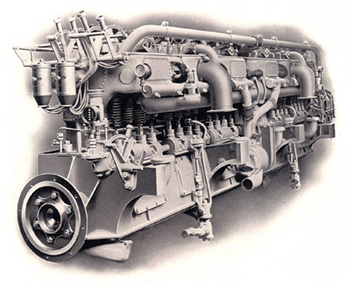
an elderly lady of my acquaintance has owned two electric tricycles, one simply a more modern (but not much) version of the first. the update proved necessary on discovering that the rather archaic method of tensioning the shorter of two chains had become redundant due to serious corrosion on the bolts that might have effected the appropriate adjustment. i shan't go into the lack of forethought that made this and several other mechanical alterations a great deal harder than they need have been, but rather maintain a single-handed debate that concerns her perceived need for an electric tricycle in the first place.
between the two rear wheels sat a large white container which promised the ability to swallow an entire week's shopping for one with ease. disappointingly, that was far from the case, as this white fibreglass box was home to the car battery responsible for powering the tricyle's rear wheels. as if that were not enough of a handicap to velocipedinal joy, the installation of a not even close to featherweight car starter motor as the means of propulsion meant that the poor, frail cyclist was in need of considerable effort to have the tricyle move in a forward direction prior to switching on the motor.
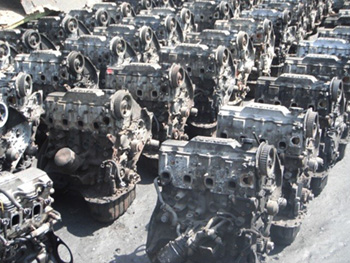
as it turns out, her main reason for acquiring the vehicle in the first place was the existence of a short climb on the single-track road along which she took her daily pedalling constitution. the condradictory situation that this created was that without the motor and car battery, she would likely have been more than capable of riding up this shallow climb unaided. the problem is now moot, since the lady in question is now too frail and elderly to continue with its use, but the several occasions on which i was required to carry out maintenance rather brought home the heath robinson design and construction of such a substantial piece of machinery.
electrics and motorisation have not only simplified in the ensuing years (though i've really no idea whether the tricycle manufacturers have availed themselves of these technological advances), but decreased in size and weight, adding the ability to change gear by simply pressing a button. were the lady to have made her choice more recently, it seems very likely her needs could be far better accommodated nowadays than was the case some ten years ago.
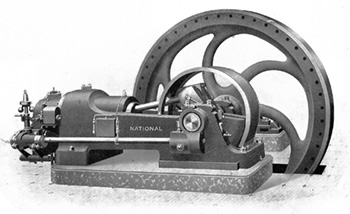
the ever-changing horizon of motorising and electrifying was made perfectly apparent even several years ago at the cycle show in its former home at earls court. colnago had on display a colnago c59 italia in a very desirable metallic silver paint and kitted out with shimano's di2. aside from the delectable appearance of this bicycle, the principal point of interest was just where they had managed to secrete the battery, since it was manifestly obvious that it was no longer sited on the more common position on to or underneath the down tube.
though now common knowledge, at that point in time, though colnago had informed me as to just where the battery was placed (inside the seat post), i was under strict instructions not to divulge this to anyone visiting the stand. shimano, and more recently, campagnolo, have had the perspicacity to alter the shape of their respective batteries to allow fitting somewhere inside the cycle frame. with the benefit of hindsight, it's bizarre that they didn't think of this in the first place, since one of the unique selling points of electronic shifting was the almost totality of clean lines afforded by fitting the wires inside the frame tubes.

however, this internal concealment has brought the possibility, nay likelihood of a separate problem altogether. for in the spring classics of only a few years ago, swiss rider fabian cancellara left belgian tom boonen floundering in his wake by the mere act of stomping on the pedals. rather than encouraging accusations of drug-taking, strangely such a velocipedinally vociferous act led to the supposition that cancellara might just have benefitted from a motor concealed within the carbon frame. if you consider the power that riders such as cancellara and boonen are capable of delivering unaided, any concealed motor would surely need to have been providing at least as much, if not more, to have been of any benefit. and though i have already pointed out how clever technology has become, it would also likely have increased the cycle weight to the point where cancellara would have been at a disadvantage throughout the rest of the race.
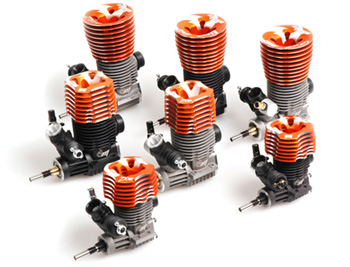
think back to that tricycle with the car battery.
yet despite all this, the uci brought in scanners to check for concealed motors in the 2010 tour de france and, according to the belgian newspaper het nieuwsblad, they also used a minute camera inserted into the frames at last weekend's cyclocross world championship races at hoogerheide to carry out similar checks. whether coincidental or otherwise, disgraced italian rider danilo di luca made accusations of mechanical doping on italian television only last month.
if i might briefly revisit my recent article regarding shimano advertising that their professionally sponsored riders are unable to ride hydraulic disc equipped bicycles in sanctioned races, surely if such engines were technically available, there would be an advert in cyclist or procycling professing the same?
when there is, i'd appreciate if you'd form an orderly queue behind me.
wednesday 5 february 2014
 ..........................................................................................................................................................................................................
..........................................................................................................................................................................................................cleverhood cycling cape

around twenty years ago, myself and a colleague morphed from the relatively simple act of repairing bicycles to actively selling the blighters. since neither of us were particularly well-off financially, we had initially to ask for a deposit on each bicycle and hope fervently that the customer paid in full before the thirty days allowed on the invoice had passed. it was a very simplistic financial model, and thankfully one that worked for our few years of cycle retail entrepreneurship. disappointingly, carriage costs from the mainland escalated more rapidly than did the profit margins available on ordering only one or two cycles at a time, and in latter days we were effectively doing it as a hobby rather than any form of enterprise.
those carriage costs have, if anything become worse as the years roll by, even to the extent that one or two suppliers are unwilling to send items to the highlands and islands (yet are quite happy to send items worldwide, according to their websites). that, however, is a moan for another day and another blog.
our sales empire, such as it was, concentrated on the mountain bicycle as principal offering, not so much because we had a particular afficnity with the genre, but because that's very much what was en-vogue at the time. economies of scale meant that something in bright yellow with 21 gears was far more amenable to most folks' budgets than anything perhaps a tad more appropriate. though adult customers oft made mention of what was (and is) regarded as a 'proper bike', we were assured by our suppliers, who demonstrated such velocipedes in their catalogue, that there was no demand in the uk.
thus, as far as islay was concerned, the mountain bike reigned supreme.

our premises, such as they were, opened onto a portion of pavement at the top of main street, and when doing our world famous impersonations of the blodgett brothers' and trying through brute force and ignorance to remove a recalcitrant component from a rusting hulk, intrigued passers-by would often stop to keep us off our work. that's mostly when the subject of proper bikes arose, along with the concomitant cycling cape. no matter the demonstrable improvements in cycling apparel for the civilian population, thoughts of those bright yellow capes stretched over the handlebars of a sit-up-and-beg seemed etched in the psyches of the less than velocipedinally intrigued.
the irony of such recollections was that such a garment was still held in high esteem, despite the most common reason cited for not riding a bicycle on islay being the impressively strong winds. no amount of pointing out that the cape of recollection would hardly have been equal to the task of riding in those abhorrent winds, seemed to lessen the fondness with which it was remembered.
however, for those of a less pelotonic mindset, i have never lost sight of the fact that such a device (if i may refer to it as such) has many commendable aspects, not least of which is an ability to keep dry the legs of one more conventionally dressed. i had a teacher at primary school who rode a bike to work everyday, and on rainy days she wore a cape to protect an immaculate skirted suit. though the weather may have seemed far more aggressive of late, by and large it still blows and pours. if the capes were good enough in my youth, there seemed no real reason why they'd be any less so nowadays.

cleverhood are based in providence, rode island, not that far from richard sachs' domicile in warwick, massachusetts and offer a wide range of hooded capes ostensibly ideal for cycling, walking or any other appropriate activity. enclosed in a carry sack that offers two draw straps, it can be worn rucksack style when on the bike, a mode of carriage that i employed by choice, though it could just as easily have been placed on a rack or in a basket.
the cape itself is cleverly versatile, with velcro tabs on each side if riding with it at full extent is likely to prove unnecessary. the arm slots are reinforced and automatically closed by means of cleverly concealed magnets. internally, at the bottom of each arm slot is a thumb loop, use of which keeps the cape well positioned over the handlebars to offer appropriate weather protection for trousers or skirt. i'm not a great fan of hoods on any garment, perhaps a tad iniquitous on a garment made by a company named cleverhood, but the example forming part of the electric houndstooth cape sent from providence at least offered a usable peak and the ability to fit under a cycle helmet.
in my opening conversation with susan mocarski of cleverhood, i was rather keen to point out that at least a part of my desire to review, other than it seeming most fitting for use with the taurus corinto bicycle, was to examine just how such a garment would perform in windy, if not galeforce conditions. there was never any intention to wear it in heavy winds before declaring "see, i told you it wouldn't work." if folks round here are ever going to ride proper bikes, perhaps they'd be inclined to wear proper cycle capes too.

i carried the extremely waterproof cape with me on my recent ride from the oa to gruinart dairy, a ride carried out in (almost) civilian garb. i'd barely started when the rain came on and i'd no wish to spend some thirty miles riding in wet trousers. popping on the cape for the first time was a bit of a faff, but mostly due to lack of having ever done so before in the great outdoors. with need of doing so for a second time as i neared the end of my ride, the process was one heck of a lot simpler. there's a quarter length front zip that can be opened or closed depending on the strength of headwind or need of ventilation, and whether it has to be pulled on over a helmet. this is augmented by a waterproof zipped pocket on the left breast.
it's waterproofing was never in question; there's a certain joy in watching endless droplets of rainwater rolling off its surface as you pedal. the big question was how manageable would it be in strong winds?
bear in mind that windspeed is entirely relative and very much what you're used to. islay's average windspeed over the year is probably in the mid to upper thirties mph; those are all but unremarkable to residents on the west of scotland, though i can appreciate that many would figure a number in the mid-teens to be enough of a headwind. but they're wrong. though my day's ride was mercifully free from a galeforce breeze, the speed did rise slightly in the afternoon. this, not unnaturally resulted in a bit more effort required to move in a forward direction, but then, if it's the fast life you're after, you wouldn't be living in the hebrides in the first place.

i wouldn't attempt to wear one of these in really strong winds, not so much for reasons of stability (though there may be one or two related concerns in that department), but if you'll take my word for our average windspeeds, i'd be happy to ride in those without any fears of being blown off. if the wind happens to be at your back, the cleverhood cape could be a distinct boon.
though i chose the houndstooth as being an appropriate pattern in the rural idyll, its demarcation as electric is due to the weaving of a scotchlite thread through the fabric. in car headlights at night, it lights up like a christmas tree. in short, the cape's pragmatic versatility is greater than i figured it was likely to be. sat on a bicycle with thumb loops in place on the handlebars, is very unlikely to turn you into a style guru, but to be honest, that's hardly its prime purpose in life. it keeps the wind at bay, it keeps the rain off and it can be quickly stowed and accessed during a ride.
an old concept given impressively new life.
the range of cleverhood capes cost $239 (£145) and they will send to the uk. one size fits most.
tuesday 4 february 2014
 ..........................................................................................................................................................................................................
..........................................................................................................................................................................................................